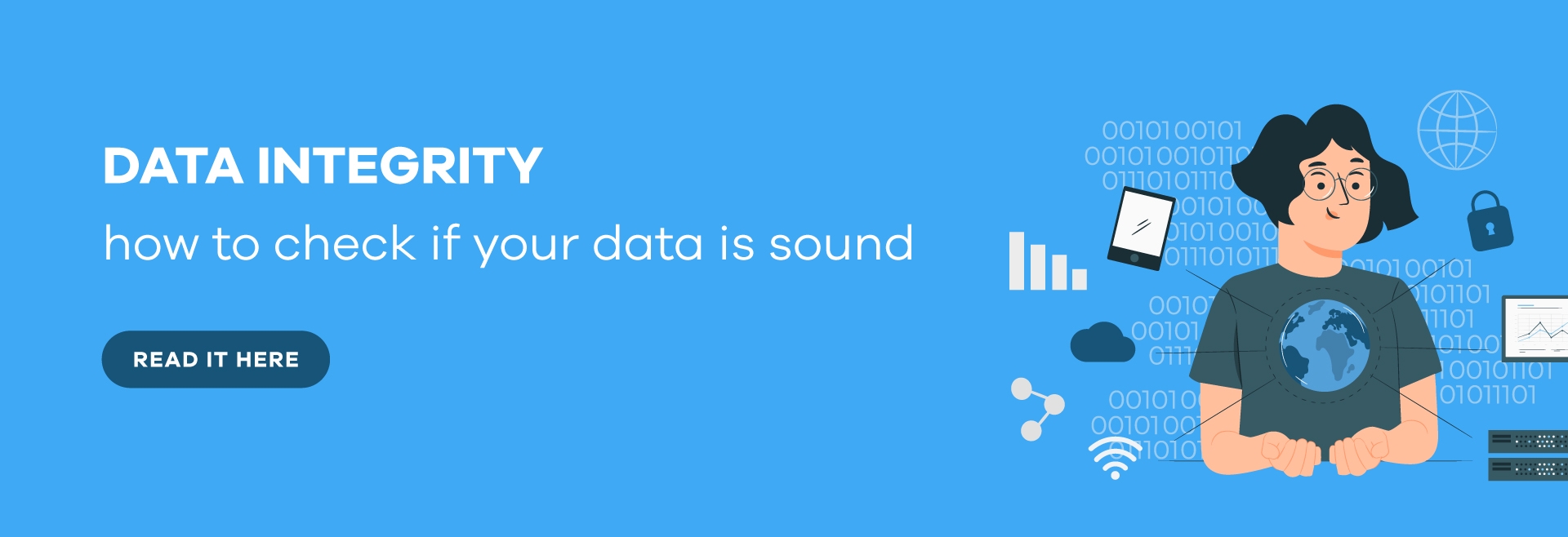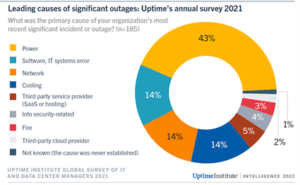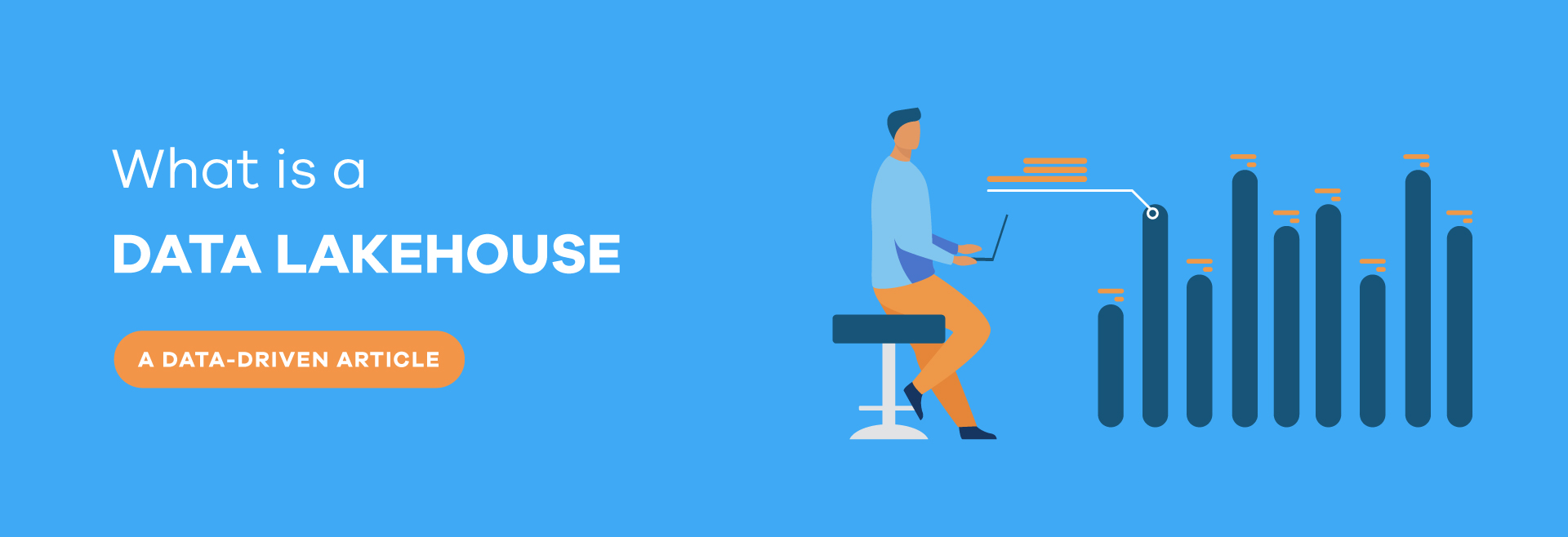
Data Integrity: how to check if your data is sound
A simple error in a dataset can have a devastating effect on a company.
This is how to fend off threats, secure your information, and maintain data integrity.
Broken dashboards, poorly trained Machine Learning models, inaccurate analytics. Clean and reliable data is a challenge for any information intensive company. There is little doubt that data is vital, either to outperform competitors, acquire new customers, and become more efficient. So why is so little care given to its “hygiene”? The cold fact is data breaks and data downtime can have dire consequences for any businesses .This is what data integrity is in practical terms and how it can help companies. What you will learn:
- What is Data Integrity?
- How important is it to maintain Data Integrity?
- What are the threats to Data Integrity?
- How to check Data Integrity in 6 simple steps
- Getting started with Data Integrity
What is Data Integrity?
Data Integrity is the guarantee that digital information is not corrupted, altered, or lost, and that it is accessed or modified by authorized persons. In other words, it shows whether data remains valid, accurate, and reliable throughout its life cycle.
So what is a “healthy” dataset? How can you know if the data has been compromised? For Data Integrity to be assured, it must first be complete, meaning no data should be filtered or lost. Second, it needs accuracy: no data should undergo any qualitative change that compromises its analysis. Consistency is also key.
Data must remain the same, regardless of how or how many times it is accessed, and for how long it is stored. Finally, and perhaps most obviously, data should be secure at all times. Data must only be accessed by authorized applications or persons, to avoid malicious and criminal uses.
How important is it to maintain Data Integrity?
Data has become an essential part of every area of a company, from sales to marketing, production or logistics, finance or accounting. Accurate and timely data allows companies to monitor performance, identify patterns, and outline improvement opportunities. From this starting point, it is possible to design customized strategies that bring measurable financial returns. Thus, missing or inaccurate data can cause poor business decisions, with damaging consequences for a company’s goals. After all, the quality of a decision is only as good as the information fed to the decision maker.
Unfortunately, no industry is immune to “bad” data and organizations struggle because they lack confidence in the information that is supposed to guide their day-to-day decisions. Bad data is any piece of information that is erroneous, missing, outdated, duplicate, injured, misleading, or confusing in its format. In short, bad data is simply data that isn’t useful and prevents your data collection efforts from paying off.
Besides informing corporate decisions, data integrity is also essential for protecting sensitive information. From customer data, to process parameters, or an upcoming product launch details, data integrity ensures every bit of information is secured. If not well protected, it can be exposed, tampered with, or even deleted. So what exactluy causes bad data.
What are the threats to Data Integrity?
From human error to malicious actions, there are several threats that can compromise data integrity.
Human error
Any human activity involves, by nature, some degree of error. Thus, when several people access the same dataset, whether to add, transfer or delete data, there is bound to be a data integrity risk.
Hardware failures
Remember that massive global outage at Meta that left Facebook, Instagram and WhatsApp offline for at least five hours? As it turns out, datacenter outages are becoming longer and more expensive. The gap between the beginning of a major outage and full recovery has stretched significantly over the last five years, with nearly 30% of these outages in 2021 lasted more than 24 hours. Downtime is also becoming more expensive, with more than 60% of failures resulting in at least $100,000 in total losses.

Source: uptime institute
This type of failure can limit or eliminate access to data. Businesses will be best able to meet the challenge with rigorous staff training and operational procedures to mitigate the human error behind many of these failures.
Malicious actions
Hackers can exploit a fragile infrastructure to steal, alter or destroy data. In addition, a network with low security can open doors to external criminal actions, which are becoming more and more sophisticated. Bugs, spyware, malware, and other viruses that infect systems and take over information can compromise data. Cyber-attacks are growing, both in quantity and complexity, so the danger has never been more real.
Multiple data sources
CRM, ERP, Business Intelligence, social media, email, custom web apps – the world of data is more diverse than ever before, with data sets flowing in and out of any system at lightning speed. For developers, it means data is getting more diverse and complex, both in terms of structure and content. Managing such diversity is hard and, without proper care, can lead Data Integrity efforts to falter.
How to check Data Integrity in 6 simple steps
Data integrity is not a simple concept and cannot be guaranteed by isolated actions. It involves several people, processes, rules, and tools to ensure a satisfactory level of protection. These are some preventive strategies that can help build a safer environment.
1. Validate data entries
Data entry validation guarantees that the new incoming information is correct. For example, when users fill in online forms, it is important to have field validation mechanisms, ensuring that an email is entered correctly or that a letter is not entered in a field intended for the phone number. Such checks have long been in place, but many companies are taking this even further by using AI to cross check new data against the existing dataset. These systems alert users when, for instance, a price entered is higher than the expected amount or when the amount ordered is much lower than usual.
2. Remove duplicate data
It is prudent to identify locations where sensitive data may be repeated. For example, bank details can be stored in several locations, which multiplies the possibility of being accessed by unauthorized persons. To ensure data integrity, it is vital to establish a process on how to signal and evaluate possible duplicates. For instance, some companies frequently ask customers to confirm their contact data, to ensure current information is updated.
3. Increase backup frequency
Confirm the frequency of your backup system. Make sure that it is set as often as possible. Some systems, by default, assume an intermediate frequency, but this change can make a difference in a ransomware attack. When backups are activated, the risk for data integrity is an even higher, as it can be hard to match the latest versions of the system against the backup version.
4. Control access
Most Data Integrity issues boil down to human error. As such, data access and role assignment should be properly managed. Who gets to do, see, edit, and delete which bits of data? Physical access to the server should not be overlooked either – the most sensitive servers should be kept isolated. Also, it is important to use logs to track when data is accessed or changed.
5. Implement a prevention policy
It is important that everyone be aware of the importance of data integrity. The joint effort results in more effective preventive actions, as everyone is better prepared to identify potential threats and act preventively.
6. Use data integrity tools
There are plenty of tools to help identify patterns and relationships between data sets, and setting up automated processes to keep data updated and synchronized. Data quality assessment tools, for instance, help identify errors, and determine if data is complete and accurate. Data cleansing tools help clean up data, remove duplicates, and standardize data format. Mining tools identify patterns and trends in data. Finally, data visualization tools create graphical representations of data that can identify errors, trends, and outliers.
Getting started with Data Integrity
It’s more important than ever to trust your data. The future of your organization depends on it. However, protecting the integrity of your company’s data can seem like an overwhelming task. After years in the field, our superstar developers at Near Partner became experts in Data Integrity. We would love to brainstorm and help you design a path to secure your information. Drop us a message and let’s make sure that your data is safe and sound!





